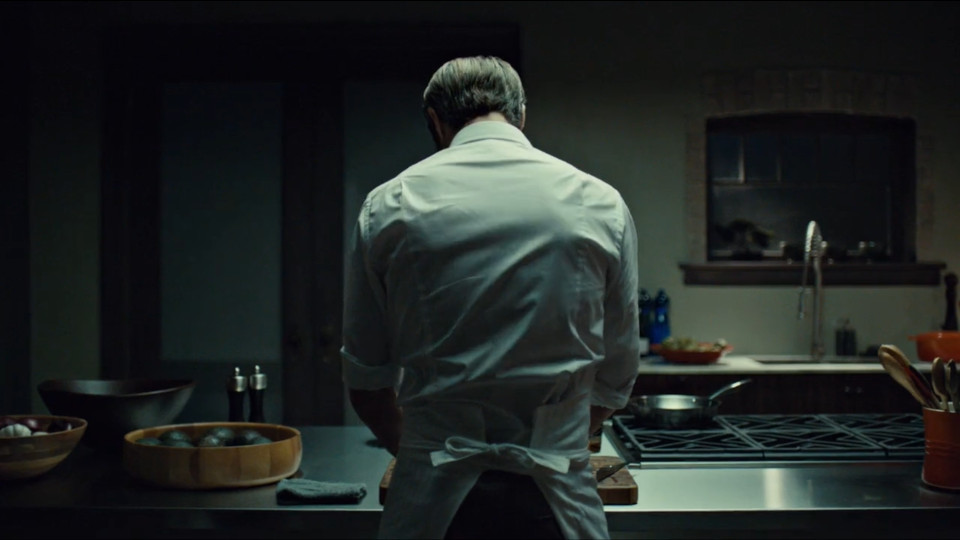Surreality in the Pilot of Hannibal
This show talks about some pretty heavy stuff, including cannibalism. I’m also going to be showing certain images from the show. While I don’t think there’s going to be anything overtly disturbing in this post, I thought you should have fair warning.
The pilot of Hannibal has a strong opening five minutes. A crime scene, the conclusion of a murder, is shown; then, time reverses. Blood droplets fly in slow motion off the walls, as an expressionless man reverses his way out the door, passing police standing guard outside the door. A beam of light flashes across the screen, and the street is silent. Calmly, the man walks forward, kicks down the door, and shoots a man coming down the stairs. “This is my design,” says the shooter. Time flashes forward and backward, before settling on the man, Will Graham, standing in front of a chalkboard, his design sketched out in ragged white lines.
It is instantly clear what has happened: we have been shown a glimpse of this man’s imagination. Taken from photos of a crime scene, he has reconstructed the killers plans, timeline, and motivations. Like thought, time does not flow in one continuous line. Ideas are not spelled out in thorough phrases, but expressed in bursts of images, phrases, and moments. Each time we are taken inside the mind of Graham, we see this strongly surreal editing style.
Later in the show, while trying to sleep, Will Graham has a vision of a dead girl next to him; once she comes into focus, she floats away like a ghost. The viewer is generally sure that this is a non-diagetic event, one of Will’s vivid images, but there is also a horrifying doubt: maybe this is real. It would be no less terrifying than Hannibal’s murders.

The dead girl is shown in sharp focus, with a dark, black background. It’s so real, and yet so out-of-place.
Even outside Will’s head, the editing and visuals of the show keep a more subdued surreality present. When navigating the bureaucratic hallways of the FBI building, the camera transitions with impossible movements. We are disoriented, as though the building is as labyrinthine as the organization contained within it. The general stylized feel of the show brings our attention to individual details of a scene, in much the same way that memories are organized in the brain.
One cannot talk about the editing of Hannibal without at least mentioning the framing of Dr. Lecter’s, ah, culinary expertise. Though shot more traditionally, as though filming a master chef, surreality comes with the juxtaposition of Hannibal’s immaculate countertops, cutlery, and apron with the naked organs of his victims. The shots are locked off and almost sterile, showing each of Hannibal’s expert movements. This contrast creates a sense of clinical horror; it shows that the real world is sometimes as nightmarish as the terrors that face Will each night.

Hannibal’s clean shirt and kitchen is juxtaposed with the next shot; a pair lungs, in the process of being precisely cubed.
Through a strong sense of style and consistently tight editing, Hannibal keeps us on the razor’s edge between waking and sleeping, between unreality and reality. Through its surreal style, it shows just how true and scary our most remote dreams can be.